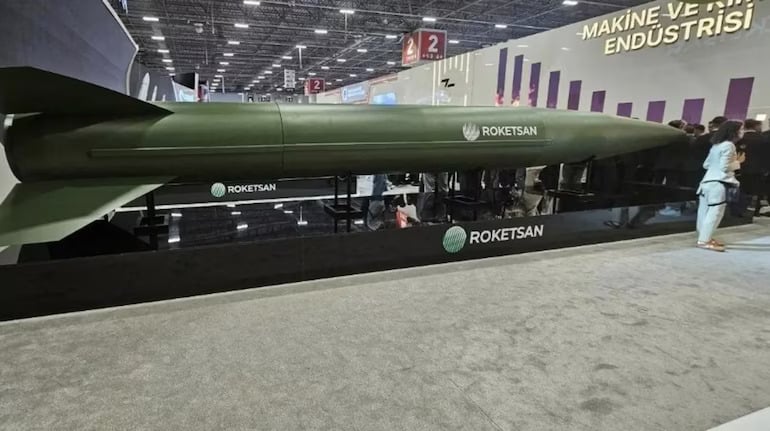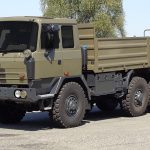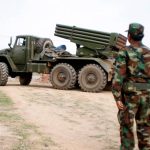The Tayfun Block-4 hypersonic missile is Turkey’s most advanced indigenous weapon to date. It is capable of flying at speeds over Mach 5. Unveiled by defense giant Roketsan, the missile reflects Ankara’s ambitions to become a technological and strategic power in its region.
In the global hypersonic arms race, Turkey now joins major players like the United States, China, and Russia. This showcases both its indigenous innovation and military-industrial maturity.
Evolution of the Tayfun Missile Program
The Tayfun program began in the early 2020s as part of Turkey’s plan to reduce its dependence on foreign defense suppliers. Roketsan, established in 1988, led the initiative and drew early experience from its cooperation with China’s CPMIEC on ballistic missile technology.
Turkey tested its first Tayfun missile in October 2022. The missile achieved a range of over 560 kilometers. With successive upgrades, the Block-4 variant now features hypersonic glide capabilities that make it almost impossible to intercept with current defense systems.
Tayfun Block-4: Technical Specifications
| Feature | Details |
|---|---|
| Speed | Mach 5.5 to Mach 8 |
| Range | 800 to 1000 kilometers |
| Accuracy | 5-meter CEP |
| Warhead | 750 kg conventional high explosive |
| Guidance | GPS plus GLONASS plus INS |
| Dimensions | 6.5 to 10 meters long, 610 to 938 mm diameter |
| Launch Platform | Mobile transporter erector launchers |
The missile’s hypersonic speed, maneuverability, and anti-jamming guidance system allow precision strikes in contested or GPS-denied environments.
Why Hypersonic Matters: Military and Strategic Edge
Unlike traditional ballistic missiles, hypersonic weapons fly faster, lower, and can change trajectory mid-flight. This makes them extremely difficult to track and intercept.
Turkey’s Position in the Global Race
| Country | Missile | Status | Speed (Mach) | Range (km) |
|---|---|---|---|---|
| Turkey | Tayfun Block-4 | Operational | 5.5 to 8 | 800 to 1000 |
| Russia | Kinzhal, Zircon | Operational | Up to 10 | 1000+ |
| China | DF-17 | Operational | 5 to 10 | 1800 to 2500 |
| USA | ARRW | Testing | 5 plus | Around 1000 |
Strategic Impact: Redrawing the Eastern Mediterranean Map
Target Coverage
From launch sites inside Turkey, the Tayfun Block-4 can strike:
- Greece including Athens and all major military sites
- Cyprus in its entirety
- Parts of Syria, Lebanon, and Israel
- Energy and military infrastructure across the Eastern Mediterranean
Powering the “Blue Homeland” Doctrine
The missile strengthens Turkey’s “Mavi Vatan” (Blue Homeland) maritime policy. It enables mobile and precise strikes at sea and enhances Turkey’s position in resource-rich maritime zones.
NATO Dilemma
While Turkey is a NATO member, the explicit targeting of Greece, another member, has raised serious concerns. Ankara’s pursuit of strategic autonomy challenges long-standing alliance dynamics.
Global Response: Alarm Bells in Europe and the US
Greece and Cyprus React
Greek officials condemned Turkey’s missile threats as provocations. The missile’s range and speed complicate Greece’s air defense strategy. Cyprus, much closer, faces even greater vulnerability to quick, precision strikes.
European Union Concern
The European Union has criticized Turkey for escalating tensions in the Eastern Mediterranean. The Tayfun Block-4 is seen as part of a broader pattern of military assertiveness and defiance of EU norms.
United States and NATO Balancing Act
The United States has shown support for Greece but has avoided direct condemnation of Turkey. Managing Turkey’s growing military capability while maintaining NATO unity has become a complex balancing act.
Turkey’s Defense Industry: The Rise of Roketsan
Roketsan, founded in 1988, now leads Turkey’s missile and rocket development. It oversees more than 1,300 defense projects and exports to over 180 countries.
| Metric | 2002 | 2024 |
|---|---|---|
| Domestic Production | 20 percent | Over 70 percent |
| Export Revenue | Negligible | 7.2 Billion USD |
| Active Projects | 62 | 1,380 |
This growth has made Turkey far less dependent on foreign suppliers and embargos, giving it greater freedom in weapons development.
Challenges and Risks
Strategic and Regional Risks
- Risk of triggering an arms race involving Greece, Egypt, and Israel
- Increased chances of miscalculation during crises due to reduced reaction time
Export Restrictions
The Tayfun Block-4 is limited by the Missile Technology Control Regime (MTCR). As an MTCR partner, Turkey cannot export missiles exceeding 500 kg payloads with ranges over 300 kilometers without special approval.
Economic Constraints
Sustaining a hypersonic program is expensive. Turkey’s economy, affected by currency instability and debt, may face challenges funding future upgrades and maintenance.
Technical and Operational Hurdles
The extreme speeds and stress of hypersonic flight require advanced materials and precision systems. Integrating these missiles into a modern battlefield also requires robust command and control networks.
What’s Next: Future of Turkish Hypersonic Development
- Roketsan is already working on longer-range systems like the Cenk medium-range ballistic missile
- Integration of artificial intelligence, scramjet engines, and enhanced target discrimination is on the horizon
- Turkey may also invest in hypersonic missile defense systems as the technology spreads
These developments will further shape Turkey’s military future and its role on the international stage.
Conclusion: A Strategic Turning Point
The Tayfun Block-4 is a historic achievement for Turkey. It proves the country’s ability to independently develop next-generation weapons and assert itself as a regional power.
The missile enhances deterrence, supports naval strategy, and increases Ankara’s influence across the Eastern Mediterranean. However, it also introduces risks to regional stability and complicates NATO cohesion.
As more countries pursue similar technologies, Turkey’s hypersonic leap will influence how future arms control, alliance politics, and deterrence strategies are shaped.













